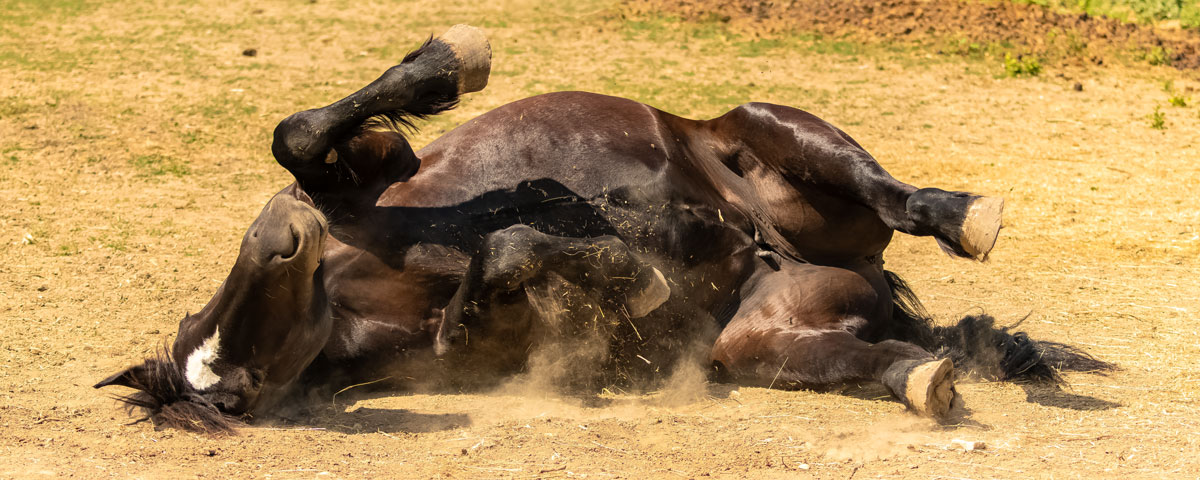
In decades past, internal parasites were thought to have contributed considerably to the incidence of colic. A research team in Germany performed a prospective case-control study of 620 adult horses to investigate an association between colic and internal parasitic infections [Gehlen, H.; Wulke, N.; Ertelt, A.; Nielsen, M.K.; et al. Comparative Analysis of Intestinal Helminth Infections in Colic and Non-Colic Control Equine Patients. Animals Oct 2020, vol. 10; doi:10.3390/ani10101916].
Based on microscopic data from fecal samples, strongyles infection rates were around 42% and tapeworms and Ascarids were identified at around 1%. Strongylus vulgaris still remains a significant parasite in certain areas, and tapeworm incidence is higher than detectable with microscopic evaluation. Detection of parasites via serology is more definitive than microscopic evaluation of feces, but antibodies often remain despite no continued presence of parasites.
This study focused on large and small strongyles and tapeworms to see if there was an association with 312 colic patients compared to 308 non-colic patients of similar age presenting to the hospital at the same time for other issues not associated with colic. Fresh fecal samples were obtained from all the horses for microscopic analysis of eggs per gram of horses that had not been dewormed in the previous eight weeks. Larvae were also evaluated for DNA, and blood samples were used for serological evaluation via ELISA testing.
Fecal testing done on 620 samples yielded 42.4% positive results for parasitic ova— strongyles 42%, roundworms 0.8%, Oxyuris equi 0.2%, and tapeworms 0.8%. Colic patients and non-colic patients had similar prevalence of helminth eggs—43% of non-colic horses versus 41% of colic horses. Serology for S. vulgaris was also similar between groups—31.3% in colic horses versus 33.3% in non-colic horses. Tapeworm antibodies (10.7%) also showed no significant difference between colic and non-colic patients.
Horses with colic were diagnosed with an impaction of the small or large intestine in 45.3%, and 24.8% had an intestinal displacement. Gastric overload was identified in 18.6%, and gastric ulceration in 9.3%.
Of particular note is that the risk of colic was 2.4 times higher in horses that had received their last anthelmintic dose of a macrolide, pyrantel or praziquantel in the week prior to admission compared to those that had received their treatments at least eight weeks prior.
The authors concluded: “The horses in the study did not suffer from gastro-intestinal helminths infection intensities resulting in sufficient damage to significantly contribute to the development of colic signs.”
They further emphasized that, “The high S. vulgaris and considerable A. perfoliata seroprevalences encountered in this investigation should prompt veterinarians, farm managers and horse owners to maintain consequent and effective worm control measures.”








